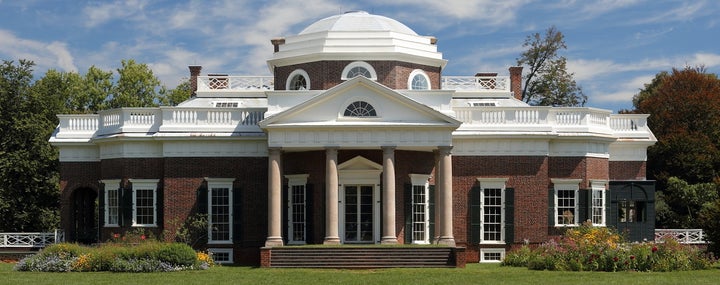
Monticello
More than 200 years after the first published item about the two appeared, Thomas Jefferson and Sally Hemings are back in the news. As it was then, the coverage is international. “Archaeologists Find Sally Hemings’ Room,” exclaims the UK’s Daily Mail, as do most of the major US media outlets. But the reporting tells us more about our troubled relationship with our nation’s history than about an enslaved woman’s experiences or about one U.S. Founder, Thomas Jefferson.
The headlines about the recent uncovering of her room in his plantation house get it wrong. The Thomas Jefferson Foundation, which owns and operates Monticello, decided to excavate and explore an area of Jefferson’s mansion that was known to have been quarters for some house slaves and that served as a restroom for much of the twentieth century.
The Foundation decided to develop a room that Thomas Jefferson’s grandson, a notoriously unreliable source, once identified as Hemings’s, to satisfy visitors’ growing interest in learning more about life of hundreds enslaved at the President’s plantation, especially Sally Hemings. The headlines that claim archeologists “found” Hemings’s room mislead by implying that a dig discovered evidence that now definitively ties her to the space.
The Foundation apparently intends to create an exhibit to illustrate what we know about Hemings, more than to actually showcase “her room.” Have they found corroborating evidence that she lived there? No. Will they? Who knows?
But few want to hear “Who knows?” because much is still riding on avoiding any ambiguity in the Jefferson-Hemings story. For some, as it did 200 years ago, it still serves as a symbol for larger issues -- determining Jefferson’s character and even larger than that, informing our understanding of slavery and of the nation. Those who continue to deny that slavery is foundational to our national development have forced some to respond with simple answers and assertions, like claiming we have now discovered Sally Hemings’s room.
But there is no need to exaggerate with misleading stories about discovering Sally’s room. “Who knows?” is only a rhetorical question about a mansion called Monticello. It is not an unanswerable question about slavery, about which we know a great deal.
There is an abundance of scholarship on sexual violence under slavery – and no shortage of work on Hemings and on Jefferson. We do not need the Hemings archeological dig to help us understand these topics. In essence, there is less riding on this dig than some might think because so much of this history has already been “uncovered.”
The forthcoming exhibit at Monticello will undoubtedly change for the better the experiences of visitors who will come away with a more informed understanding of life for those enslaved by Jefferson at Monticello.
Perhaps it may even make this kind of wildly inaccurate reporting less likely as we continue to confront our history and all its complexities to advance our understanding of who we are and where we come from.
—from Chicago Sun-Times, “Sally Hemings’ room or not, we know the brutality of slavery”
—Thomas A. Foster is Professor of History at DePaul University and author of Sex and the Founding Fathers: The American Quest for a Relatable Past
